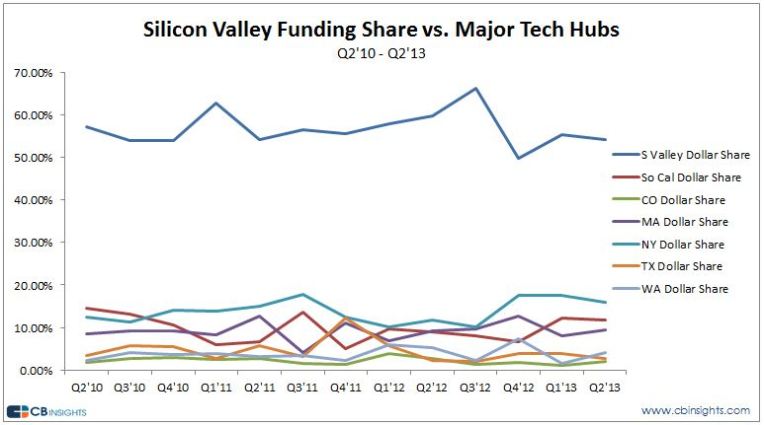By most measures, we are in crazy times right now in the tech startup world. We have thousands of new companies every week, hundreds of funding rounds over $100 million every month, and so many $1 billion exits or calculations that we’re getting used to them. A $1 billion valuation used to be a big deal for a web based company that wasn’t one of the top few.
Everyone thought Facebook was nuts when they walked away from such a deal. But now the funding seems to be flowing everywhere, at many levels, and that almost anyone who starts a startup will be successful, will be “big”. Unfortunately, this is very far from the actual truth; we just don’t hear about the 95% that fail and lose all of whatever money is invested.
The frenzy at these higher levels, and the continuous stories of first time entrepreneurs in their early 20s who magically start these amazing companies is creating a demand at the bottom of the funding market, like the pyramid schemes in Southern California in 980 (see below). Look out for this trend, put your wallet away.
Unsophisticated investors, which means family, friends, co-workers, etc. or also called triple-F – friends, family and fools, who have a few thousand dollars they would like to put into the startup “market” are the fuel at the bottom of the market that get things started. It can be anywhere from $5,000 up to $500,000. They help to make ideas into reality, hoping for the higher returns of the early investors. You’ll see many dentists, doctors, parents, Hollywood actors in the crowd. They have a lower probability of return, as expected, but now are losing their money at higher rates than ever before. We don’t hear about this much because they’re embarrassed; who wants to talk about it and admit that they made such a mistake?
This market is reminiscent of the rampant pyramid schemes in the 1970s. Here’s a description from Time Magazine June 16, 1980 issue:
For $1,000 each, 32 newcomers buy slots on the bottom row of a pyramid-shaped roster. Each new player pays half of his $1,000 to the person at the pinnacle, who ends up with $16,000. The new player also pays his remaining $500 to the person directly above him on the next tier, which contains 16 people. Since each person on that tier gets paid by two of the newcomers, he ends up with $1,000, thus recouping his original investment. As more people buy in, the players move up the chart. In time, theoretically, each person reaches the top—and $16,000.
Amazing, huh? The only problem was that the need for newcomers increases exponentially, thus the name pyramid. You needed 32 new people every night, and as the word spread new groups popped up everywhere in L.A. It fizzled out within a couple of weeks, but went on for years in other parts of the country.
Skip to 2013…
Two years ago in the California startup world there was a lot of buzz, or anti-buzz, about the impending pop of the current hyperactive tech market and unsophisticated spending of . The concerns took many forms, one of which was named “Series A Crunch”, another was the gratuitous use of the word “bubble”. Series A is the second round, the one after the seed or other small amount of ignition money. It’s the round that graduates of accelerators seek. It’s also “professional money”, not triple-f.
I remember being asked in a startup panel I was on by the moderator “What do you think of the Series A crunch?”. I replied, “Do you know what a Series A Crunch is?” She tried to explain but didn’t in fact know what it was. That was a sign to me of startup overhype, everybody mimicking each others phrase of the week.
Fast forward to today, 2015, when we’ve been in a possible “end of the boom” for over 3 years. We’ve been hearing the word bubble for that long, people trying to predict a crash, mostly out of envy for not being able to harvest any cash from this current crazy market. Seed funding is at an all time high rate and it has that scary phenomenon of feeding on itself.
There are a number of articles floating around again about the lack of Series A money in the market, which is usually required to take a company to ROI.
At the same time people are bragging about how easy it is to raise seed funding of up to $1 million. Almost anyone with a web based working “app” or mobile app can get funding. No business plan, no ROI. Sometimes you’ll need to show traffic/traction/conversion, but not usually. There are plenty of triple-F investors anxious to empty their 401K or add another mortgage, take a “risk”, for the chance at those 8 to 9 figure exits they keep hearing about.
This is also reminiscent of the late 90s when unsophisticated investors lost billions diving into the dot com boom just before it crashed fairly rapidly. The difference is now it’s not crashing so visibly. There are admittedly many more successful growth startups on the Internet than ever, the second renaissance of the web, but the statistics for success are much worse than ever.
If you look at CrunchBase, almost every day you’ll see a new funding of over $100 million. Almost every day. That’s enticing to a potential angel. You’ll also see several others from $10 to 50 million. This has become the holy grail for that 401K earning slow interest.
But here’s the problem. Most of these investments will return $0. Not 80% or 50%, zero. In this flurry of amazing new Internet startups, a higher percentage are failing after the seed round than ever before, probably close to 99% vs about 85% 20 years ago. That means almost every unsophisticated angel investor is losing their savings and adding new debt to their life.
Why will so many people lose their money and why is no one talking about it? Here are the reasons:
- It’s very easy now “look real”, i.e to create and deploy an Internet and/or mobile app live on the web or a phone. I get pitched one every day.
- We’re still in a terrible job market, no matter what the official statistics say. I’ve met more broke unemployed professionals in Beverly Hills and Santa Monica in the past 3 years than ever in my life. They have nothing to lose. Why not start company.
- The Triple F effect. Friends, Families and Fools. Those are the people who will give you funding based on no actual research or due diligence.
- Erosion of true self analysis. One very critical part of succeeding in a business is being able to critique yourself as a business. As part of the new startup world people are avoiding this process. It’s become a casualty of “fail fast” and pivot and other buzzwords.
The bottom line is that people with no experience or particular expertise in almost anything will most likely fail. So get some expertise involved before you go get that wire transfer of $100,00 for the son or friend or co-worker you want to help.
t [at] tomnora dot com







